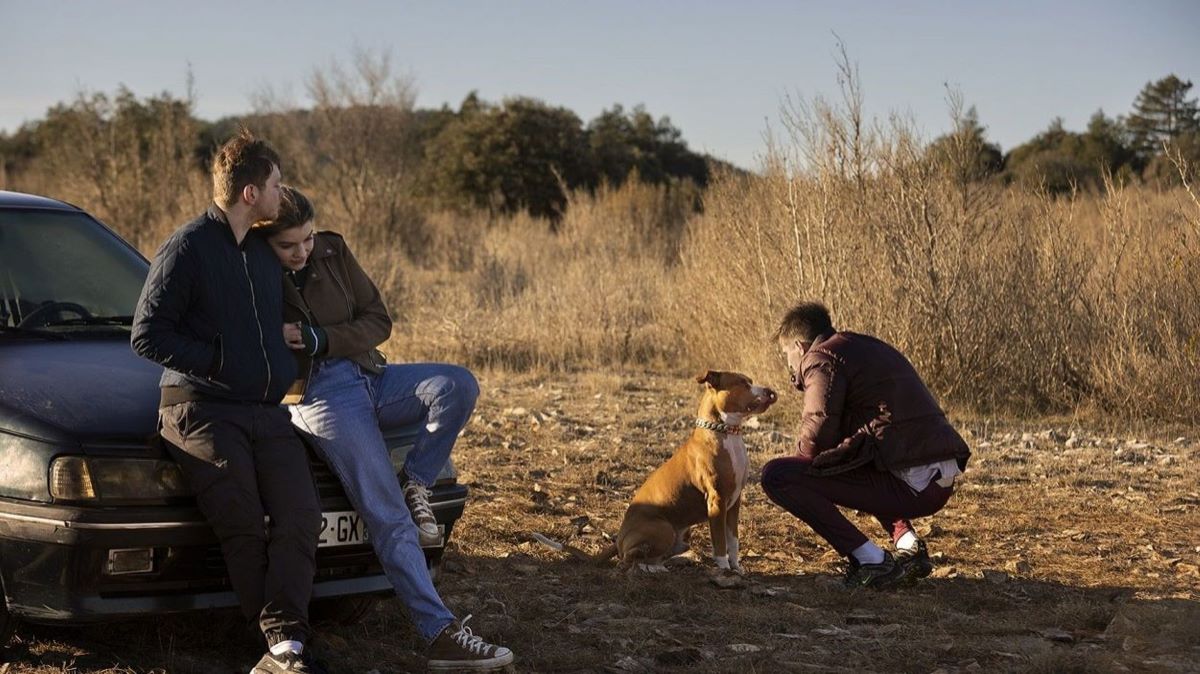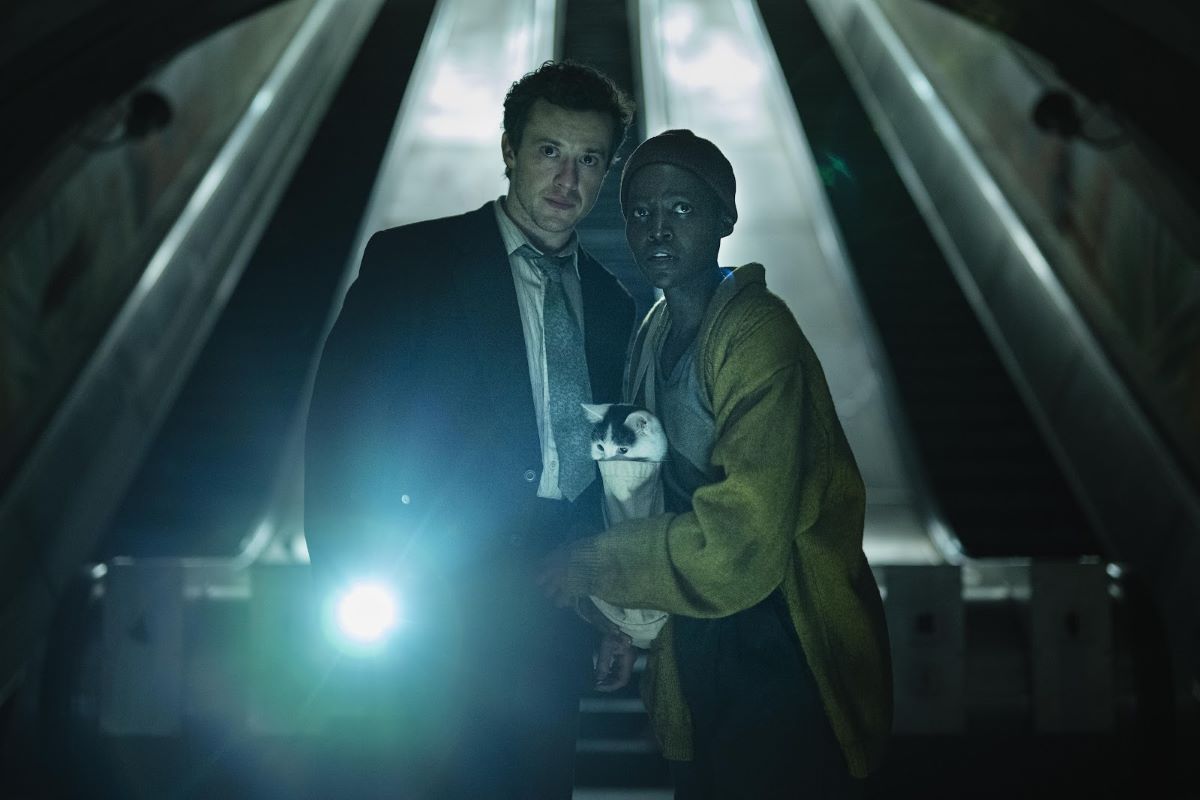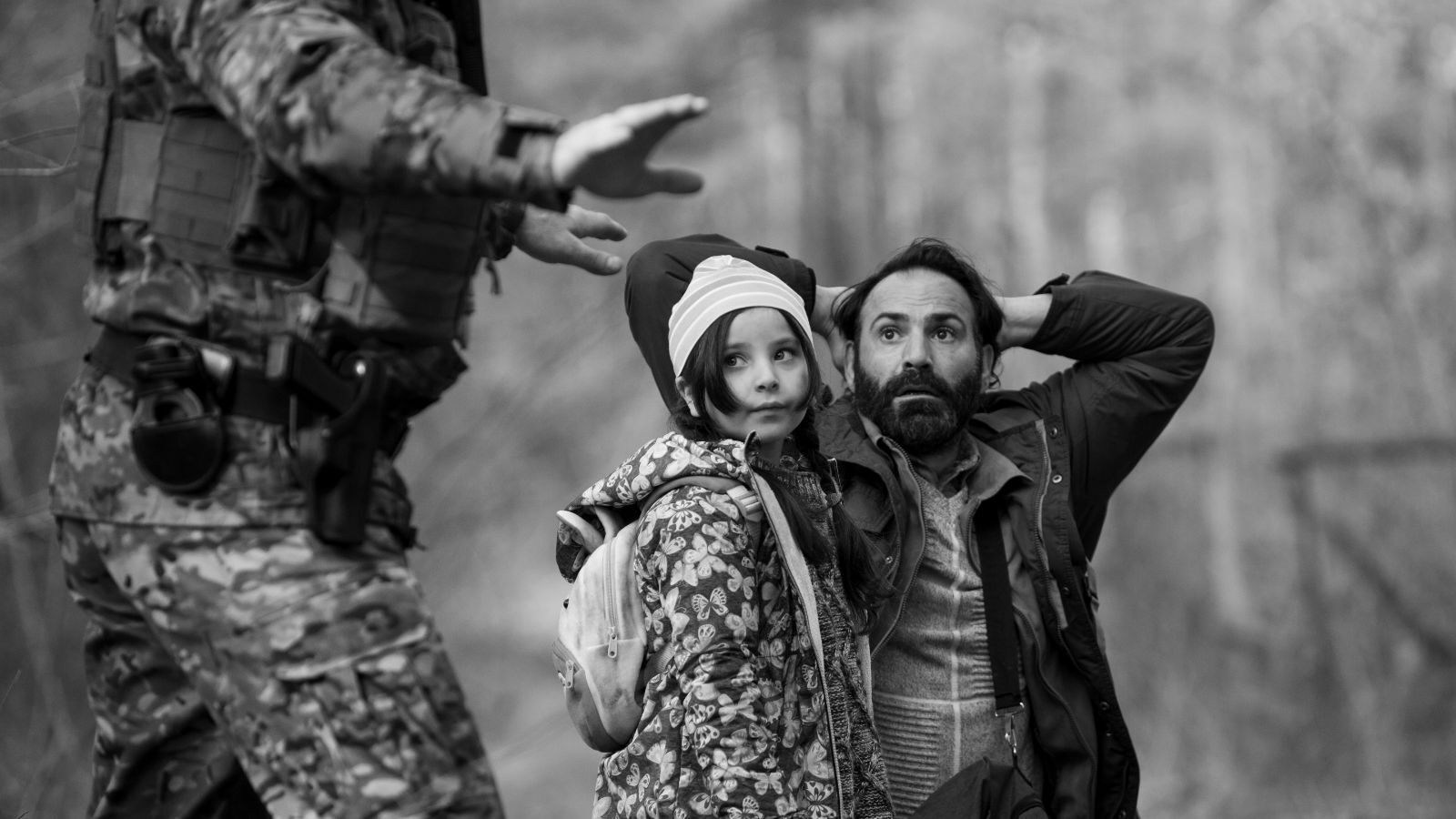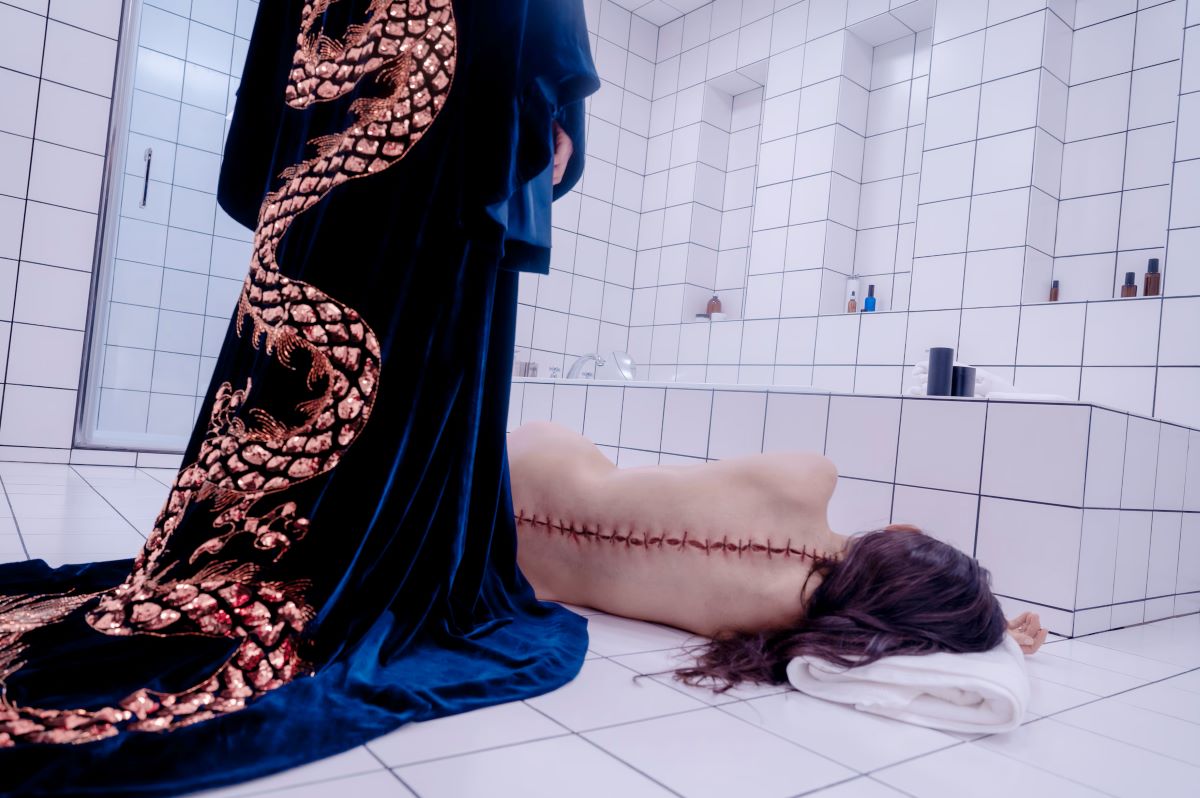MOVIE REVIEWS
Junkyard Dog
Original title: Chien de la casse (France, 2023)
In a small village in southern France, Dog and Miralès share a conflicted friendship. Their dynamic is disrupted by the arrival of Elsa, a young woman with whom Dog falls in love.
” ‘Chien de la casse’ (junkyard dog) is an expression from the outskirts, and there’s also the dog metaphor because the friendship between these boys reminded me of the master-dog relationship—an unequal relationship but also an unwavering love, courage, and loyalty that border on the absurd. The ‘junkyard dog’ does things for himself despite his friends. Each ‘junkyard dog’ believes the others are ‘junkyard dogs’,” explained director Jean-Baptiste Durand about the title of his debut feature film, Chien de la casse (Junkyard Dog, 2023). The film, released with subtitles, won two César awards, including Best First Feature.
The film primarily portrays a morbid and imbalanced friendship where the more brazen boy, Antoine, nicknamed Miralès after his surname, dictates the daily fate of Damien, called Dog. Like Antoine’s dog, Malabar, Damien follows out of affection, boredom, habit, and passivity. It’s always been this way, and it works for them within the dynamics they have established (or so it seems until the end). In the small village of Le Pouget in southern France, where the film is set, things stay the same, everyone plays their role, and that’s how it remains. The problem arises with the arrival of Elsa, a Breton girl staying for a month, who makes Damien fall in love. Antoine can’t handle it, becoming unbearable, verbally attacking his friend, embarrassing him, trying to come between him and the girl. When he fails, he withdraws from the situation and their friendship. He eventually reconnects after a wonderful scene where he clumsily tries to talk to his friend, taking him out of the village, when Damien truly needs him. Despite the perhaps conventional ending compared to the rest of the film’s striking originality, their friendship strengthens, even at an unforeseen sacrifice. It’s at this moment that we understand Antoine’s behavior, and in the final distance, after both characters have grown and individuated, Damien too will comprehend and reconcile with him.
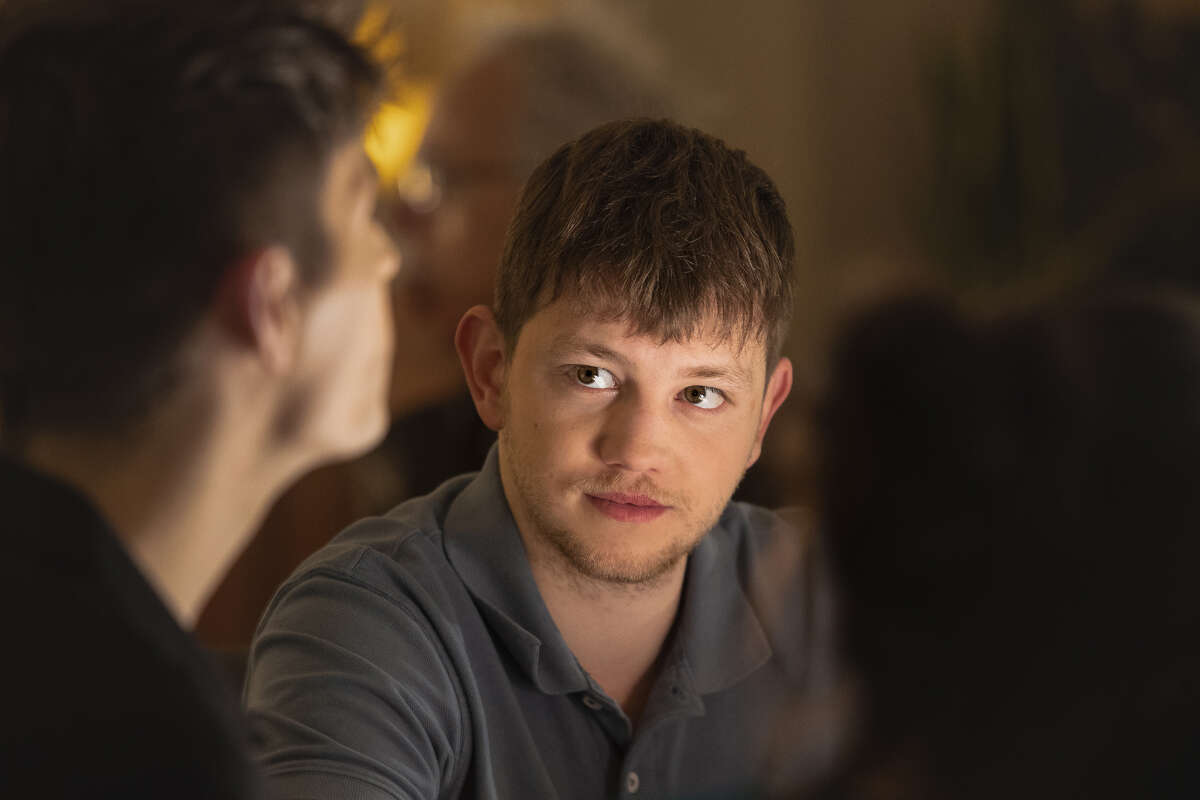
The film’s primary interest lies in the characters’ journeys. The National Union of Italian Film Critics, in naming Chien de la casse as “Critics’ Film,” justified it with: “A harsh and skillful debut work, a small gem of writing and directing young actors. A coming-of-age story set in southern France where abandoned adolescents seek, through friendship and love, a place in life.” This highlights the solid screenplay and the direction of actors Anthony Bajon (Damien), Raphaël Quenard (Antoine), and Galatéa Bellugi (Elsa), all outstanding (especially Quenard, who received the second César awarded to the film). Beyond this, the film is notable for its realistic portrayal of French provincial life, where the director himself grew up, a place where young people have no prospects unless they move to the city. Otherwise, they spend their time drinking and smoking in the same places (the square), having the same conversations, wasting their lives even when, like Antoine, they have the resources to do something different. The film opens with a night-time shot of the village, with a fixed, long shot overlaid at some point by the sound of a cello. The director also captures the reality of small villages, the French countryside, or even the rural areas where the friends walk and later bury the dog, inserting a youth that seems drawn from a banlieue film.
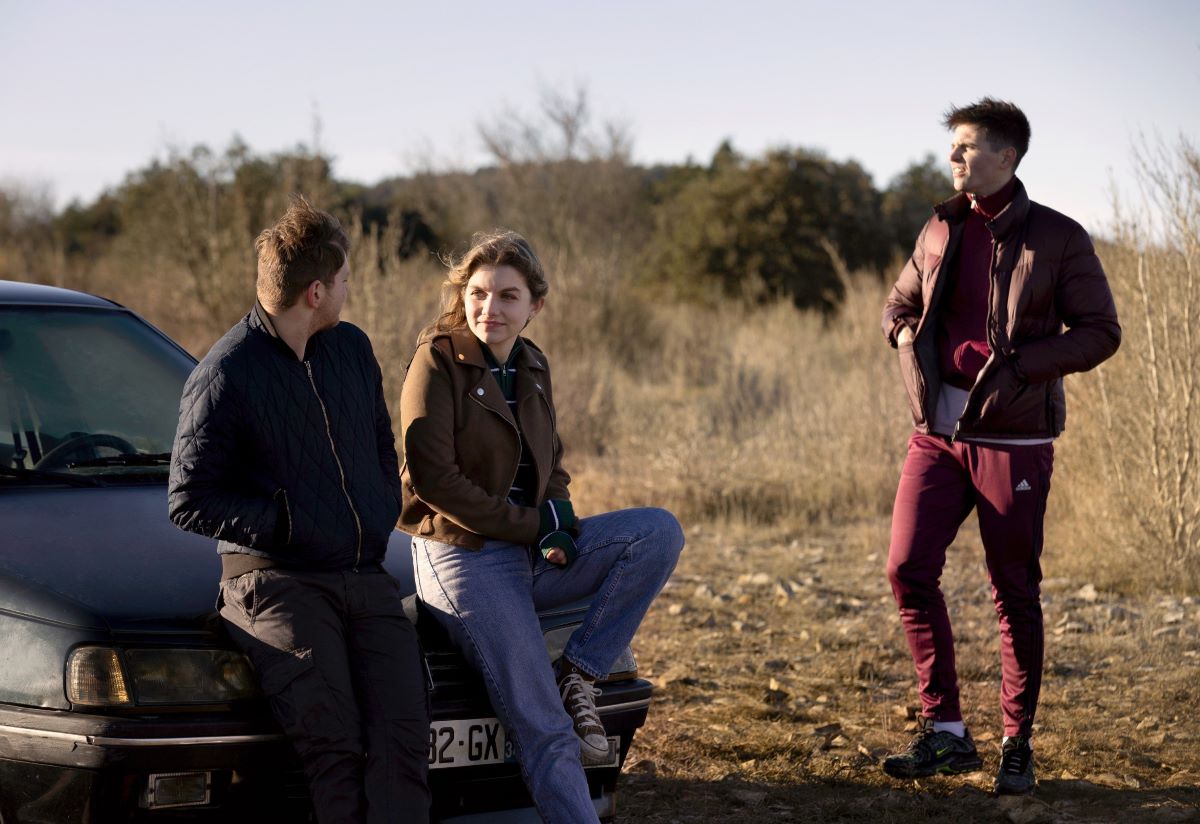
The film also includes a theatrical element, touching on the tragic and in the directing style: some scenes feature close-ups typical of French psychological cinema, capturing deep emotions, while others use a fixed camera, maintaining a respectful distance that frames the characters in their context, aiding the narrative. Thus, the film oscillates between warm, sometimes irritating psychological dynamics, and cold depictions of the environment that shaped the characters.
Paola Brunetta
Cineforum, June 1, 2024

